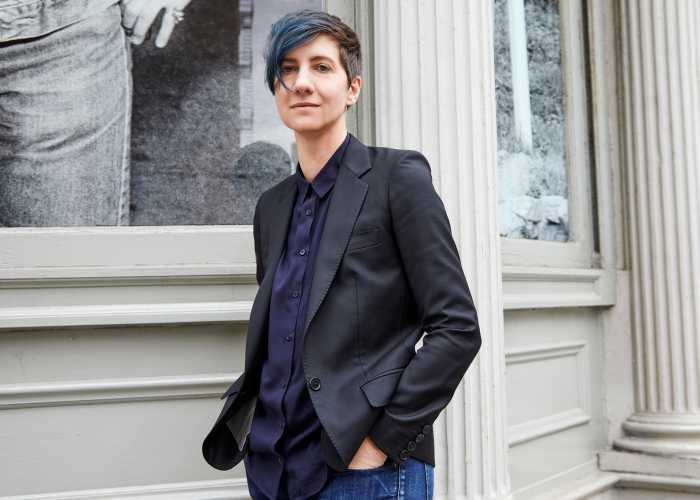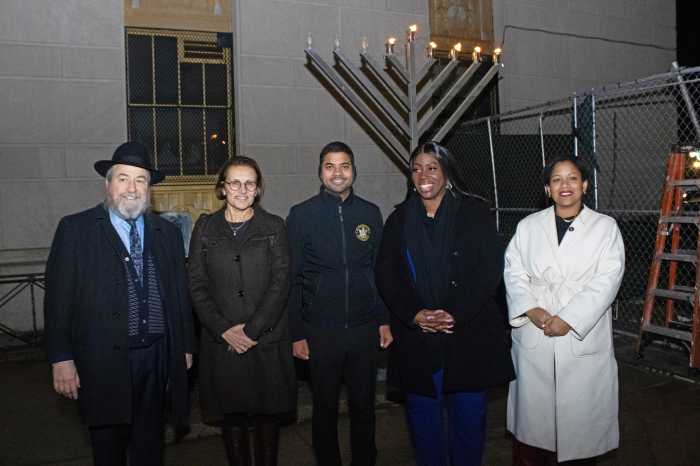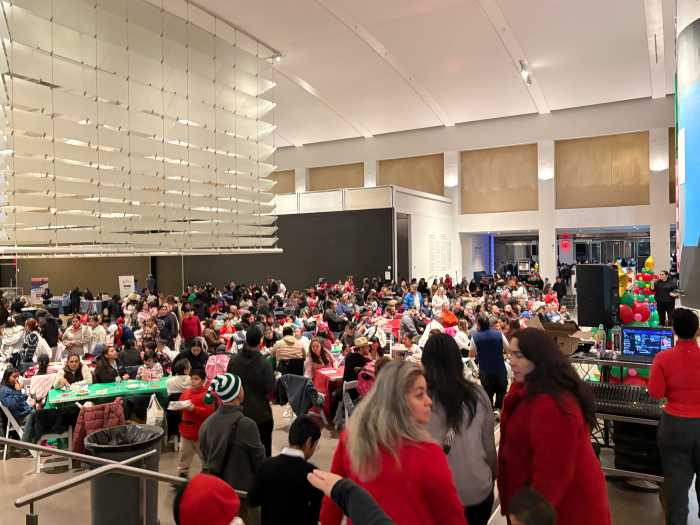Larry Gagosian has owned art galleries since opening his first venture in Los Angeles in 1980. Today, he owns nineteen exhibition spaces across the United States, Europe, and Asia designed by acclaimed architects. Mr. Gagosian is a major figure of the contemporary art world. He has received the Peabody Award as a producer of “American Masters: Andy Warhol, A Documentary Film.” Known for always encouraging his artists’ ambitions, Mr. Gagosian has fostered the careers of many of the most world-renowned artists working today.
Mary Geerlof
Managing Director, Cherry Lane Theater
Mary Geerlof is the managing director at the Cherry Lane Theatre, the oldest continuously running off-Broadway theater in New York City, located in the West Village. Last year the theatre celebrated its 100th anniversary. Geerlof is a producer, director, and historian of the Cherry Lane Theatre. She earned a bachelor’s degree in directing from New York University.
Peter Gelb
Maria Manetti Shrem General Manager, The Metropolitan Opera
Peter Gelb has served as the Maria Manetti Shrem general manager of the Metropolitan Opera since August 2006. Long before becoming the 16th leader of the Met, Gelb worked there as an usher when he was a teenager. One of his organization-wide goals has been to recruit the world’s great theater directors to enhance the theatricality of the Met’s productions and complement the company’s extraordinary musical standards. Since he took over in the 2006–07 season, the Met has added more contemporary and modern works to its repertory than in any previous era in company history. He is married to conductor Keri-Lynn Wilson and has two sons.

Clive Gillinson
Executive and Artistic Director, Carnegie Hall

As Carnegie Hall’s executive and artistic director since 2005, Clive Gillinson leads the Hall’s artistic programming team: engaging the world’s leading artists and developing major citywide festivals; creating innovative music education and digital initiatives that serve audiences worldwide; and managing all aspects of the Hall’s operations. He performed as a London Symphony Orchestra cellist for 14 years and was appointed as its manager for 21 years before taking up his position at Carnegie Hall.
Is there anything you are working on that you wish more people knew about?
In addition to the many inspiring concerts presented at Carnegie Hall, people may not know that the Hall creates extensive music education and social impact programming – most offered free or at low-cost – connecting more than 800,000 people annually to great musical experiences and reaching millions more online. The Hall has also created three national youth ensembles featuring the best teens from across the U.S., who tour globally each summer, serving as cultural ambassadors for their country.
What advice do you have for the next generation of people determined to break into the world of arts and culture?
For anyone with a passion for arts and culture, I encourage them to learn as much as they can from leaders and others they admire to help to identify and develop a path that is meaningful for them. The arts are always challenging, but also endlessly rewarding. It is vital to the future of the arts that energetic, entrepreneurial people take part, committed to offering inspirational experiences to people throughout every part of our society.
What can New York policymakers do to support the continued development of arts and culture in the city?
We hope policymakers will restore cuts to public arts funding, recognizing that our city’s wellbeing is bolstered by its vibrant, diverse cultural community. Our public-private partnership yields extraordinary benefits, city- and statewide. In addition to our role as employers, the direct impact from New York’s arts organizations on the city’s economy includes approximately $500 million in spending with local vendors. We also serve the city through programming for students, teachers, low-income New Yorkers, and families.
If you could attend any event, show, or exhibit in the city tonight, what would it be and why?
If not at Carnegie Hall, I’d attend an event at one of the 50+ partner organizations that have joined with us to create our citywide “Fall of the Weimar Republic” festival, a powerful and engaging exploration of the fragility of democracy; there are dozens more festival events through May. The exceptional range and depth of arts and culture available to all of us is one of the great reasons to live in New York City.
Gary Ginstling
President and CEO, New York Philharmonic
Gary Ginstling has a 20-year career as an orchestra leader, with a strong track record of increasing ticket sales and fundraising, developing innovative programming, and building community ties. Within months of his becoming the New York Philharmonic’s president and CEO, in July 2023, the organization announced the largest-ever single contribution to the NY Philharmonic’s endowment in its history, a $40 million contribution from Board Co-Chairman Oscar L. Tang and H.M. Agnes Hsu-Tang to establish the Music and Artistic Director Chair, commencing in 2025. Ginstling joined the orchestra as executive director in November 2022, when his activities included working with NY Philharmonic leadership to engage Gustavo Dudamel as the Orchestra’s Music and Artistic Director, to begin in 2026. He serves on the board of the League of American Orchestras, the advisory council of the Tianjin Juilliard School, and the executive committee of the Avery Fisher Artist Program.

Anna Glass
Executive Director, Dance Theater of Harlem

Anna Glass has been involved in the performing arts as both an artist and arts administrator for over 25 years. She currently serves as the executive director of the Dance Theatre of Harlem (DTH), recently named an “American Cultural Treasure” by the Ford Foundation. In May 2013, she began her own endeavor dedicated to preserving and documenting the legacies of prominent Black artists and cultural institutions, and reinterpreting those legacies onto multiple platforms, including live performance. She recently produced Carmen de Lavallade’s newest solo show “Carmen de Lavallade: Life of a Legend for Jazz” at Lincoln Center and prior to that “As I Remember It” – an intimate portrait of this legendary artist, which toured across the country. Anna received her undergraduate degree from Oberlin College and her J.D. from the University of Dayton School of Law. She is also a licensed attorney in the state of New York. Anna lives in Harlem with her husband and daughter.

Russell Granet
President and CEO, New 42

Prior to joining New 42 as CEO, Russell Granet was acting president of Lincoln Center for the Performing Arts from April 2018 to May 2019. Mr. Granet assumed this leadership role during a pivotal moment in Lincoln Center’s longstanding efforts to bring the best of the performing arts to the broadest possible audience. Mr. Granet joined Lincoln Center after having founded the international consulting group Arts Education Resource (AER), which worked with leading cultural institutions, school districts, and public and independent schools on wide-ranging projects that included board development, strategic planning, program design, program funding, program implementation and development of arts education programs for students with disabilities.
Is there anything you are working on that you wish more people knew about?
New 42 and New Victory Theater are committed to the young people and families of NYC. We know from our SPARK research that exposure to the arts is most impactful between the ages of 5 and 10. And that exposure, if fostered over time, can create a life-long theater going habit. We also know there are many barriers keeping young people from getting to the theater with cost being the main barrier. Last past year, New 42 launched a partnership with the New York City Housing Authority (NYCHA) to provide free tickets to families living in public housing. Through this program, each family can receive up to four free tickets per show to be used to see shows of their choosing at the New Victory Theater. Access has always been at the forefront of New 42’s work and this initiative will allow families from the NYCHA community to foster a lifelong appreciation for the performing arts through active engagement from a young age.
What advice do you have for the next generation of people determined to break into the world of arts and culture?
Arts are their most powerful when they are most needed. Artists who help us understand where we are and how we move forward have always been at the forefront of societal change. My urgent plea to the next generation: your artistic voice, your unique narrative is more than welcomed, it is emphatically needed. At New 42, we talk a lot about who is at the table and what they bring into the room. The people I respect most in the world of arts and culture bring a strong sense of not only where they have come from, but where they want to lead people. Perhaps most importantly, they also LISTEN. The arts, whether inspirational or disruptive, are a collaborative endeavor.
What can New York policymakers do to support the continued development of arts and culture in the city?
More often than not, we are advocating to people who already believe in what we do and understand the positive impact the arts have on humanity. The challenge is getting heard by those individuals in positions of power who believe the arts are superfluous. More importantly, once in front of these people, being prepared with a clear, comprehensive, and persuasive argument as to why the arts are non-negotiable. New York policymakers can help broker these relationships.
If you could attend any event, show, or exhibit in the city tonight, what would it be and why?
The Times Square Alliance’s Midnight Moment. Midnight Moment is the world’s largest and longest-running digital public art program. Offered nightly, it is experienced by literally millions of people each year. Midnight Moment showcases the work of contemporary artists on one of the most iconic public canvases – the electronic billboards of Times Square. There is something very powerful about being in Times Square at 11:57 P.M. and experiencing an extraordinary work of art with complete strangers. There is a hush that comes over Times Square followed by thunderous applause. It is pure magic!
Adam Greenfield
Artistic Director, Playwrights Horizons
Adam Greenfield has served as the artistic director of Playwrights Horizons since July of 2020. He joined the theater in 2007 as literary manager, and served as its associate artistic director from 2015-2020. Throughout his tenure at Playwrights, Greenfield has shepherded over 80 productions, including the world premiere of “Stereophonic,” which opens on Broadway this month. He created the theater’s “Almanac” literary magazine, New Works Lab, Resident Company Program, and Soundstage fiction podcast, among other vital programs.

Stamatina Gregory
Head Curator and Director of Exhibitions and Collections, Leslie-Lohman Museum of Art

Stamatina Gregory is a curator, art historian, and New York City native. They have taught art history, critical theory, and writing at the University of Pennsylvania, New York University, Parsons at The New School and Sotheby’s Institute, and have organized exhibitions for institutions locally and internationally. Their co-curated exhibition, “I’m a Thousand Different People – Every One is Real,” is currently on view at the Leslie-Lohman Museum of Art.
Is there anything you are working on that you wish more people knew about?
The entire nature and process of making art exhibitions and putting on radical programming can be a mystery to people outside the field. It’s slow, collaborative work, involving many different kinds of arts workers – technicians, designers, carpenters, shippers. Working with artists, particularly in framing queerness and transness in their–and our–own terms means sharing a vision, and moving at the speed of trust. But it is ultimately rewarding, for us, for artists, and for the public.
What advice do you have for the next generation of people determined to break into the world of arts and culture?
The city is full of potential collaborators for the work you’re most passionate about bringing into the world. Find your people. Make projects happen together.
What can New York policymakers do to support the continued development of arts and culture in the city?
Artists are people, and arts institutions are run by people – people who are largely underpaid but who pull off miracles every day, because they care. Investing in culture means investing in the people who create it – artists, arts workers, care workers, sex workers, immigrants – and who need to be able to afford to live and work here.
If you could attend any event, show, or exhibit in the city tonight, what would it be and why?
Our panel with Black Trans Femmes in the Arts (BTFA) Collective in celebration of Trans Day of Visibility (ok, this is technically on Sunday) with painter Ava Tuitt and photographer Eve Harlowe. BTFA organizes and supports projects for Black trans femme artists as well as providing direct support – and they are incredible collaborators.
Michael Hall
Artistic and Executive Director, Art Students League of New York
Michael Hall is the artistic and executive director of Art Students League of New York, an active center for the development of artistic talent in New York City since its founding in 1875. Hall previously served as global head of operations and logistics for Art Basel, managing the fair’s production in Basel, Miami, and Hong Kong. A practicing artist himself who frequently collaborates with artists on independent projects, Hall brings the combined experience of organizational leadership, art world knowledge, and artistic practice to the position.





